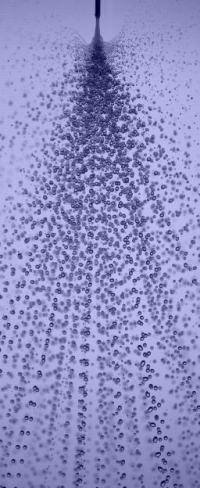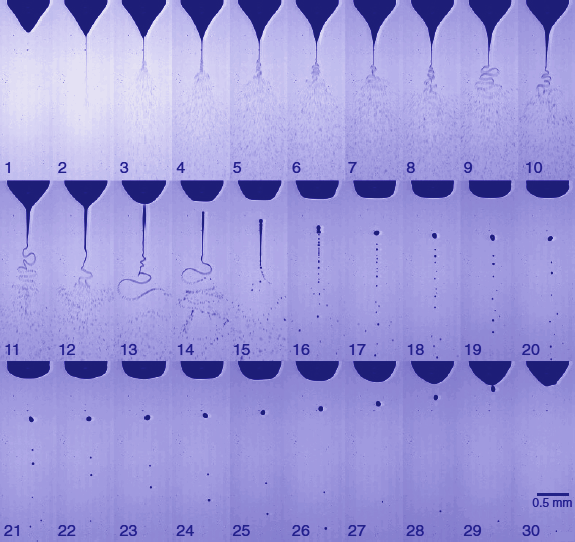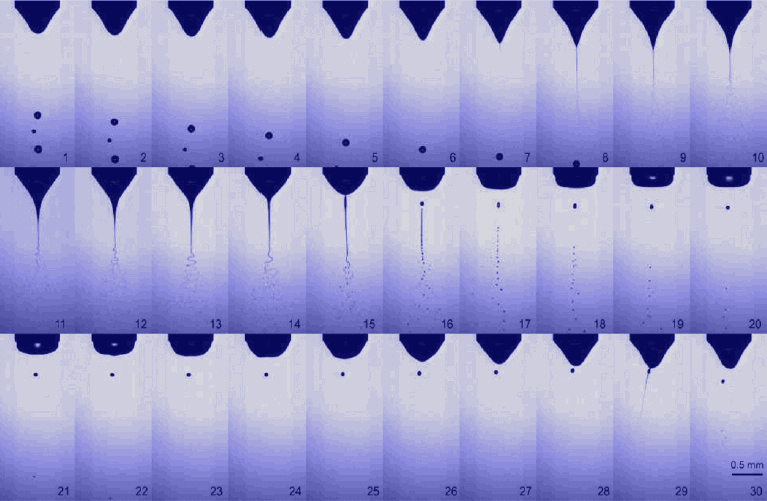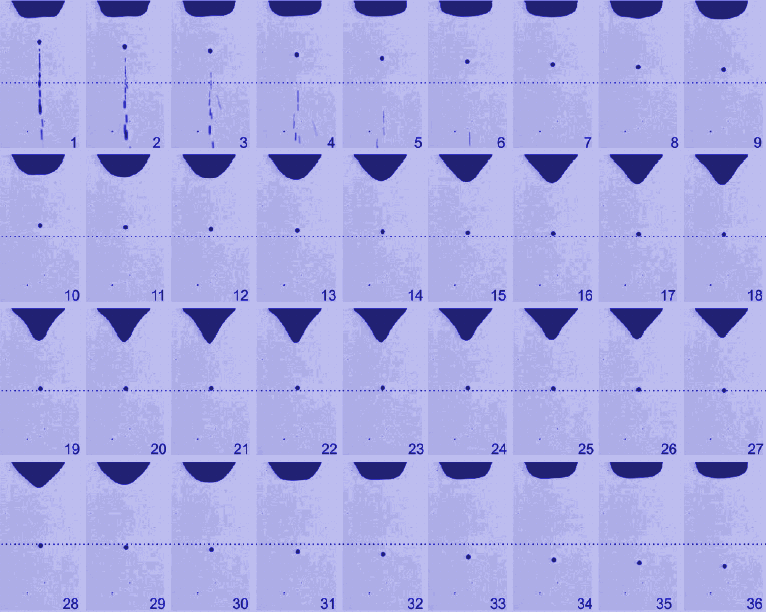| Electrospray :: | ||||||
|---|---|---|---|---|---|---|
Electrospray Reverse movement and coalescence of water microdroplets in electrohydrodynamic atomization In the case of water, droplets may reverse their paths flying back toward the liquid meniscus, sometimes making contact with it. Such reverse movement is caused by polarization of the water inside the strong electric field. To understand this phenomenon we developed a way to calculate the droplet charge using its trajectory obtained by high-speed imaging. The values found showed that these droplets are charged between 2.5% and 19% of their Rayleigh limit. The bouncing effect Some droplets
return (bounce) to the meniscus and are completely
reintegrated to it. This category is called the returning
followed by “complete coalescence” (category C1, see Fig. 2). |
 |
|||||
| Fig. 1: Electrospray: A liquid (water) is pumped through a charged nozzle. | ||||||
 |
Fig. 2: Category C1 (complete coalescence): a droplet returns to the cone after being formed from a liquid ligament. The diameter of the returning droplet is ∼80 μm, the time frame between images is ∼45 μs, the applied potential is −5.67 kV on the counter electrode, and the flow rate used is 1 mL h−1. |
|||||
|
||||||
 |
||||||
Fig. 3: Bouncing with “partial coalescence,” or C2: a droplet collides with the meniscus with mass exchange. The droplet diameter before
|
||||||
 |
||||||
Fig. 4: Noncoalescent bouncing (C3): nozzle to plate configuration with 6 kV applied on the nozzle. The plate was grounded and placed 4 cm
|
||||||
The presented experiments resemble classical EHDA: A
dc electric field interacts with deionized water and creates
an electrospray in different modes, dependent on the field
strength. What was hitherto unknown, however, is that in the
pulsating jet mode, polarization forces can create oppositely The interested reader will find a thorough description of the experiments including charge and pathway calculatios as well as a complete reference list in the corresponding papers: |
||||||
|
||||||